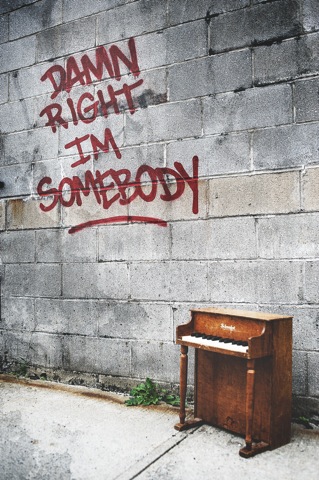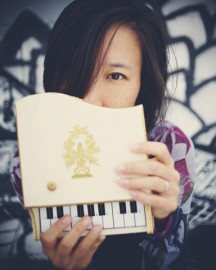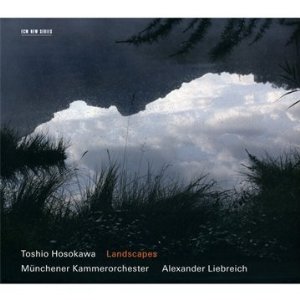
Congratulations to:
Kyle Lynch
Ulysses Tone
Everette Minchew
Mark Wilson
Winners, please send me a quick email with your preferred mailing address.
Best,
Christian
The Original New Music Community

Congratulations to:
Kyle Lynch
Ulysses Tone
Everette Minchew
Mark Wilson
Winners, please send me a quick email with your preferred mailing address.
Best,
Christian
Courtesy of Boosey and Hawkes, Bridge Records, and Naxos Records, we have another special giveaway that will benefit those not able to attend Elliott Carter’s 103rd birthday party on Thursday in New York.
We’re giving away two signed CDs of “Music of Elliott Carter: volume 5” (Bridge 9128), and two of String Quartets Nos. 2, 3 and 4 (featuring the Pacifica Quartet; Naxos 8.559363), along with a signed 8×10 photo to accompany each.
Once again, I’ll be selecting the winners via a random drawing. If you’re interested, send me an email at: S21managingeditor@gmail.com. The contest will be open until noon on Thursday.
Hi, All.
We’re giving entrants another day to put in for the Carter ticket giveaway, extending the deadline until tomorrow (Monday).
All we need is your name and a brief (a sentence or two) statement about Carter.
Check back Monday evening for our next giveaway: memorabilia signed by Elliott Carter!

Spectrum Concerts Berlin visits New York
Last week, I met with cellist Frank Dodge at Lincoln Center to discuss the upcoming concert his ensemble Spectrum Concerts Berlin is giving in New York.
At 8 PM on December 7th at Weill Recital Hall, Dodge and his colleagues, in collaboration with the Abby Whiteside Foundation, will present a program that celebrates the works of composer/pianist Robert Helps (1928-2001).
Helps was a virtuoso performer adept at both contemporary repertoire and warhorses from the classical music canon. He also relished championing works that had been overlooked and crafting (often fiendishly challenging) transcriptions for the piano. More than once, I heard Milton Babbitt suggest that Helps “made the unplayable playable.”
Born in the United States, Dodge relocated to Berlin in the 1980s. But he didn’t forget about his first encounters with Helps: in the late 1960s in Boston as a student at the New England Conservatory of Music.
He says, “Bob (Helps) liked to champion pieces that needed looking after. His performances of the music of John Ireland, Felix Mendelssohn, and Poulenc and, of course, his own music were truly very special to hear. We were fortunate to have him visit and perform with us in Berlin twice. I only wish that, before his passing in 2001, we could have collaborated more frequently.”

Dodge’s stewardship has cultivated a group of champions of underrepresented repertoire. Spectrum Concerts Berlin is currently giving its twenty-fourth season of concerts. They have recently released their second recording devoted to Helps’ music: Robert Helps in Berlin (also featuring the ATOS Trio and Helps; Naxos 8.559696-97). A double CD set, it features a number of Helps’s important chamber works, including one of his first mature pieces, the 1957 Piano Trio, as well as one of his last, Piano Trio No. 2, written shortly before his passing. It’s interesting to note his return to the genre after forty years’ absence. My initial impression of the piece is one of leave-taking. I hear its angular lines, brittle articulation, and acerbic harmonies as a defiant kind of valedictory statement. Dodge, on the hand hears the trio showing evidence of new potential directions in Helps’s music; alas, unrealized.
He says, “The second Piano Trio and some of the other late pieces, such as Shall We Dance (1994) and the Piano Quartet and Quintet (both 1997), provide glimpses of Bob considering his compositional approach afresh. I find the discoveries he makes in these works to provide some of his most exciting music.”
The CD also includes a live recording of Helps at the piano; performing a recital that includes some of his aforementioned favorites: Mendelssohn, Ireland, Poulenc, Shall We Dance, and Godowsky’s Studies on Chopin’s Etudes (or, as one of my professors used to like to call them, Chopin on steroids!). One is struck by his exquisite touch and seemingly effortless virtuosity of Helps’ playing.
The impressive array of compositions and music-making displayed on the Naxos disc raises a question. Why isn’t Helps a household name here? Why don’t American-based ensembles perform more Helps and why don’t more composers know him as an important figure?
When I pose this question to Dodge, he says, “Bob did zero self-promotion: none. Even though he taught all over and was very well respected, he had a difficult time with the conventional ‘career building’ activities that many musicians take for granted as part of the business. And he also had considerable personal struggles during his lifetime, with illnesses and other challenges. There were long periods of silence, where he didn’t play or compose at all. Fortunately, these gave way to great bursts of creativity.”
“So, Helps isn’t a household name … yet! Things will change. Sometimes, when a figure is hyped during his or her lifetime, but their work is nothing special, they fade away rather quickly. With Helps, the opposite can be true. It is durable work, and its legacy will only grow. The strength of his music is what will bring performers and listeners to it over time.”
My take: if you’re in the New York area, don’t miss out on this chance to hear Spectrum Concerts Berlin on 12/7. They will make you a convert to Helps’s music in nothing flat.
Ticket Giveaway
In a very generous gesture, the ensemble is offering 20 FREE tickets to S21 readers. If you’re interested in attending the show, email Paula Mlyn at: paula@a440arts.com with your name. She will put aside a ticket for you for the December 7 performance.

Fred, I’m thinking of setting E.E. Cummings for tenor and chamber orchestra… That’s a wonderful idea, it goes along with your other settings of important American poets; which poems will you use? Perhaps some of the early poems having to do with WWI.
Can you play these multi-stops: C, G, C#, G#, E and C, G, E#, D#, B, F#? I’ll try them out when I get home. [Later, on the telephone] Yes, they work. Good, I’m putting them in my new Double Trio.
I’m working on a String Trio, do you think the viola can hold a high F-sharp for almost two bars? What is the tempo? Oh…it is half note = 60. (Knowing it will work, I answer) Let me try it out. Yes, the viola will be able to hold it. Good, that’s the end of the piece!
Then the idea of the 103rd birthday concert for Elliott Carter came about. Last year, for his 102nd birthday, Charlie Neidich and the Camerata Notturna did a beautiful concert which included the Clarinet Concerto, Wind Rose and the slow movement of Carter’s Symphony No. 1. This year, I thought, let’s do all of Carter’s new music, most of which has not been heard in New York or anywhere. This concert is fated to succeed because of the music, and the people: Carol Archer, Nicholas Phan, Virgil Blackwell, Rolf Schulte, Gordon Gottlieb, and many more.
Elliott will be hearing five of his pieces for the first time. THIS IS GOING TO BE AN INCREDIBLE PARTY!
-Fred Sherry
_______________________________________________________________________
Elliott Carter’s 103rd Birthday Concert will be at the 92nd Street Y (Uptown; Kaufman Concert Hall) on December 8 at 8 PM (three days early, but we’ll give ’em that!)
Ticket information can be found here.
Better yet, courtesy of 92nd Street Y and Boosey & Hawkes, Sequenza 21 is offering two pairs of tickets to the concert.
Here’s how to enter: send a short missive about Elliott Carter – your favorite piece, something about his music that interests you, etc. – to my email address: s21managingeditor@gmail.com
I will use a Cageian, rather than Carterian, method of selecting the winners (hint: put names in hat: draw out two).
Contest is open until Sunday at noon. I will announce the winners on Monday morning. Those entries that are particularly eloquent and non-trollish will be published on the site.
Those Carterians outside of New York or unable to make the show – take heart. We will also be having a second giveaway – signed Carter memorabilia! Check back here later this week for details.

Think the emphasis should be placed on the first word of toy piano? If so, you’re behind the times! The repertoire and the number of toy piano performers are both steadily growing. And manufacturers like Schoenhut are custom designing and upgrading their toy pianos to make them viable for a plethora of special effects (check out David Smooke’s recent blog post over at NMB to learn more about various extended techniques the instrument is capable of enduring).

A commissioning project organized by Phyllis Chen and run since 2007, the Uncaged Toy Piano composition competition has worked on expanding the repertoire for toy piano. On November 29, December 1, and December 3, listeners will get to hear the fruits of the contestants’ labors. The Uncaged Toy Piano Festival showcases new pieces and several imaginative approaches to the baby grand’s spunky smaller cousin. In addition to Chen (and Smooke), the festival will feature toy piano diva Margaret Leng Tan, toy instrumentalist Angelica Negron, improvisor Miguel Frasconi, avant-folkies Cuddle Magic, and Rusty Banks’ Babbling Tower-to-Tower for toy piano and cell phones(!).
Uncaged Toy Piano Festival
November 29th, 7:30pm: Playhouse at Dixon
Dixon Place Lounge
161A Chrystie Street, New York City (Lower East Side)
December 1st, 8pm: Gershwin Hotel
7 East 27th Street, New York City (between 5th and Madison)
December 3rd, 8pm: Toy Bonanza
37 Arts The DiMenna Center
450 37th Street, New York, NY
On the File Under ? blog tomorrow, we’ll be discussing Landscapes, Toshio Hosokawa’s first portrait CD for the ECM imprint. The new recording features an orchestral arrangement of this 1993 work, originally scored for shô and string quartet.

I certainly wouldn’t want to be compelled to prefer one to the other: Landscape V is a haunting tone poem in both its intimate and fuller incarnations.


Time Out New York’s Steve Smith is sparing with the 5-star CD reviews, but he gave his highest score to Drawn Only Once, Due East’s New Amsterdam release. It features two beguiling multimedia works by John Supko, which feature video, electronics, Due East (Erin Lesser, flute and Greg Beyer, percussion), as well as a number of other instrumentalists and vocalists. These various elements are overlaid in a busy patchwork quilt, sometimes contemplative, at others dizzying: but it’s always a beguiling sound world. Despite the sometimes dense colloquy of events found on Drawn Only Once, the release will likely draw listeners back to fathom its depths in successive hearings.
Lesser and Beyer live in Wisconsin and Illinois, respectively. But on Monday night, they’re bringing Supko’s music to Galapagos Art Space, which will be bathed in the glow of video and the envelopment of surround sound.

Sharing the bill with them is another New Amsterdam artist – Gregory Spears – whose newly released Requiem is his debut CD. This is another disc that’s spent a lot of time in the short stack near my favorite listening spot, ready to be pressed into service for repeated hearings.
Spears combines early music instruments and singers with a 21st century aesthetic sensibility in a contemplation of mortality that eschews both dogmatism and morbidity. Although it’s a far more ambient motivated work than the Fauré Requiem, Spears’ essay in the genre shares a comforting and cautiously affirming demeanor with its predecessor, as well as a sensuousness of sound and intriguing modality that is most fetching.
Doors open at 7:00 and the show starts at 8.
Galapagos Art Space is located at 16 Main St, Dumbo, Brooklyn.
Call 718/222-8500 for more information.

Last month at Columbia University’s Italian Academy, I was formidably impressed by an evening of madrigals old and new performed by the vocal ensemble Ekmeles. One of the revelations of the evening began with an idea ofensemble director Jeff Gavett. He thought that the madrigals of Carlo Gesualdo might benefit from Nichola Vicentino’s 31-tone equal tempered scale, most famously employed in the tuning of an instrument of his design, the archicembalo.
While, as Gavett admitted in the concert’s program notes, there is not direct evidence that they were ever performed this way in the presence of Gesualdo, there is some documentary evidence that Vicentino’s writings and an archicembalo were available to the composer. But here, the proof was in the singing. Gesualdo’s music sounds glorious in 31-TET. Indeed some of its idiosyncratic cross-relations and chordal voicings glisten: equally, wonderfully, strange, but somehow refocused.
Ekmeles contains several youngish singers with winsome voices: Gavett, soprano Mary Mackenzie, and countertenor Eric Brenner are notable standouts. Their interpretative maturity and skill in preparing the challenging works on the program bely the freshness of Ekmeles’ sound. The group also brought in a “ringer of ringers” for the second act. New music superstar soprano Lucy Shelton joined Ekmeles for a spirited rendition of Elliott Carter’s late Ashbery setting Mad Regales.
The program also featured several deconstructions of the madrigal aesthetic. Peter Ablinger’s Studien der Natur, in which sounds of nature and commerce alike are recreated using only voices, was a rather charming one-upping of Josquin’s El Grillo. Johannes Schöllhorn and Carl Bettendorf took the madrigal into postmodern, often craggy, territory. Martin Iddon’s hamadryads required the group to play water-filled glasses and employ headsets to grok its very expanded Pythagorean tuning that is notated down to 100ths of a cent! Incredibly challenging to perform. But then, Ekmeles revels to be challenged.
__________________________
This Thursday, composer Randy Gibson’s work will be in full force on the Music at First series. The concert features the world premiere of Gibson’s Circular Trance Surrounding the Second Pillar with The Highest Seventh Primal Cirrus, The Utmost Fundamental, and The Ekmeles Ending from Apparitions of The Four Pillars (fit that title on a postcard!), a concert length work in just intonation for sine wave drones and seven voices. Also on the bill is a set from Canadian harpsichordist Katelyn Clark.
Performance details
Date: Friday, November 18th 2011
Time: 7:30pm
City: Brooklyn, NY
Venue: First Presbyterian Church of Brooklyn
Address: 124 Henry Street
Admission: $10
Once again, we find ourselves in the thick of things. The New York concert season is reaching a fever pitch of pre-holiday season intensity, in which presenters and ensembles try to get their programs heard before the inevitable onslaught of Messiahs, Nutcrackers, tree-lighting ceremonies, and caroling elbows its way to the forefront of New York’s calendar of musical events – ready or not. While we can’t be in two places at once (I still think Steve Smith has a magic ring that enables this power!), hopefully between the various new music enthusiasts in the Sequenza 21 community’s NYC cadre, we can support these “hot tickets.”

11/4 at 8 PM at Weill Recital Hall: Opera Shorts 2011
The third annual installment of the Remarkable Theater Brigade’s Opera Shorts program is this Friday. These mini-operas – ten minutes or less – are an emerging composer’s dream: a chance to hear a brief slice of their work on the stage. But Opera Shorts draws some heavy hitters to the mini-opera game as well. The 2011 installment features works by prominent songsters Jake Heggie, William Bolcom, and Tom Cipullo, as well as emerging creators Marie Incontrera, Mike McFerron, Davide Zannoni, Anne Dinsmore Phillips, Patrick Soluri, and Christian McLeer. Given the length of that list, it’s lucky that none of them have Wagnerian ambitions — this time out at least!
11/4 at 8 PM on the water: Bennett Brass at Bargemusic